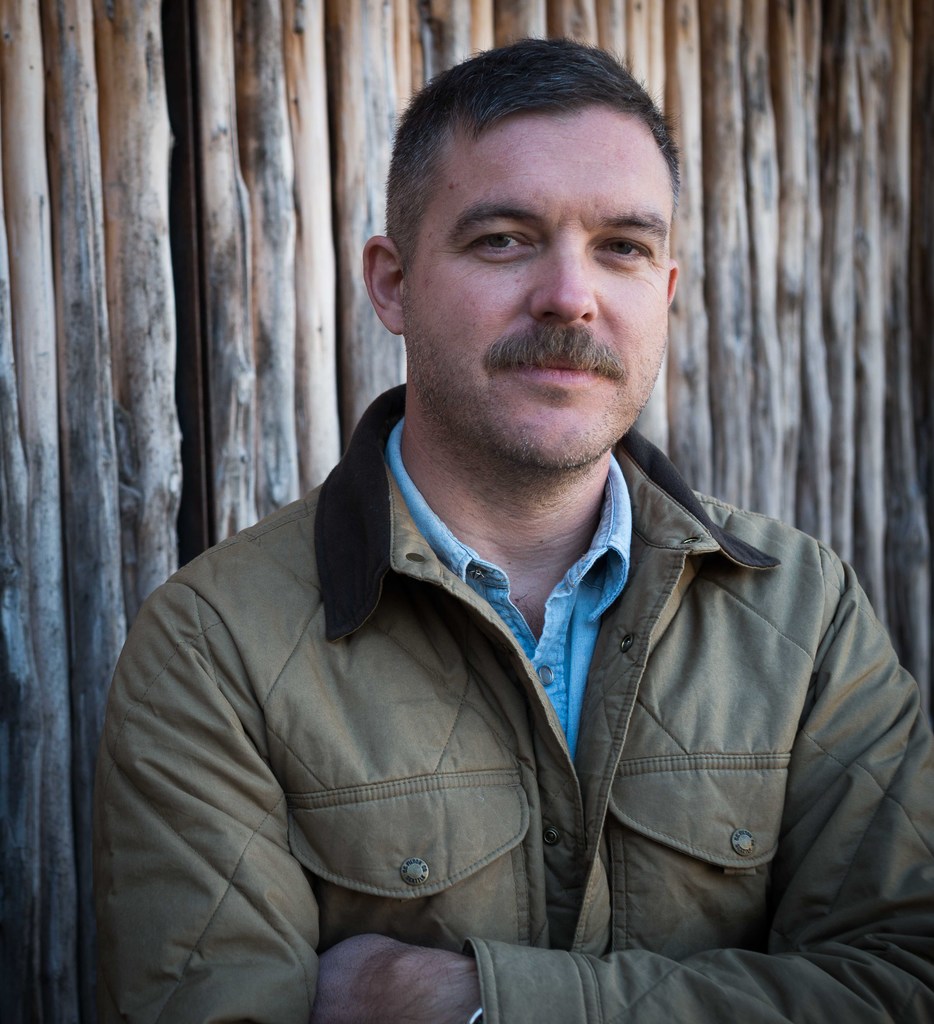A Shout in the Ruins has a ring to it – both as a book and as a title that a poet would craft.
Novelist Kevin Powers spent six years writing his lyrical and violent story set in “the ruins” of Richmond, Virginia, the place where he was born and raised. The author anchors one narrative strand in the ruins of the Civil War; the second unspools 90 years later, during the ruins of the Richmond-Petersburg Turnpike construction that knocked apart the old Jackson Ward neighborhood of the city.
Readers can glimpse a thematic through-line from Powers’ fierce and luminous first book, The Yellow Birds, an elegiac story centered on a U.S. soldier named John Bartle returning from the Iraq war. It won an Anisfield-Wolf Book Award for fiction, as well as the PEN/Hemingway award.
“I will probably always be interested in the way that violence affects communities, how people respond to those sort of situations and how people put a life together when not all the pieces are intact,” Powers said in 2013 in Cleveland. As a teenager, he served as U.S. army gunner in Mosul and Tal Afar, Iraq.
A Shout in the Ruins has a deep feel for blood-soaked Virginia. It becomes a multi-generational look at racism and intimacy in the context of war and ruin, American edition.
The story follows two couples: Rawls and Nurse, young people enslaved and in love, and their owners, Emily Reid Levallois and Antony Levallois, bound in marriage and unhappiness and treachery. Levallois is the region’s major landowner – his plantation is called Beauvais – and he sows menace in every direction. 
As the book opens, Beauvais is burned, Emily either a ghost or an escapee from that place. The narrative scrolls backward to her midsummer birth, with Rawls as a little boy in the yard watching his mother rock the newborn, a “strange girl who would so influence the rest of his life.”
A few pages later, Rawls begins his nighttime courtship of Nurse, who asks him, “Why do you have a gait like a hobbled dog?” He shows her his feet, both big toes “docked,” or sliced off in childhood after he tried to escape. As the couple sits with this, “the common noises of the night returned. The nightjar’s solemn whistle. A fox scream in the distance. The world painted in shades of gray and lit solely by reflection.”
A mere 15 pages into the novel Powers has nestled beauty and horror together.
The second chapter pivots to George Seldom, an elderly black man losing his house to the 1956 turnpike construction. George takes his displacement as the cue to travel – with a copy of The Negro Traveler’s Green Book – toward a memory of the North Carolina cabin of the woman who raised him from a foundling.
At mid-book, the reader learns how George’s history links to Rawls, Nurse and the Levalloises; George never does. Powers alternates the two narrative threads in a way that complicates all their stories.
When Rawls, still enslaved, is brought home by a group of four white men enraged by him, only Antony Levallois is clear about punishment. The other three “had lived a long time under the assumption that the threat of retribution was enough of a deterrent to keep the course of their lives moving in a predictable direction. And further, their hesitance to use violence to enforce their mastery over those they owned was a sign of a deep well of kindness and loyalty that characterized the tangled knot of the relationships of all involved. Among the five men gathered beneath the colorless buds of the sycamore tree, only two were free of this illusion.”
Those two are Levallois and Rawls, “who had decided long before that a kind master was a terrible master to have.”
Powers bring a psychological acuity to A Shout in the Ruins. These insights and their consequences spill through all his characters, reaching George Seldom a century later, reaching Powers’ readers now.
Another son of Richmond, Tom Wolfe, put The Yellow Birds on par with All Quiet on the Western Front. Wolfe died last month at age 88. Let’s hope that Little, Brown & Co., which published both men’s work, delivered an early manuscript to the elder literary lion in time for him to read it.




Charles Ellenbogen
June 11, 2018
I’ll add it to my list!